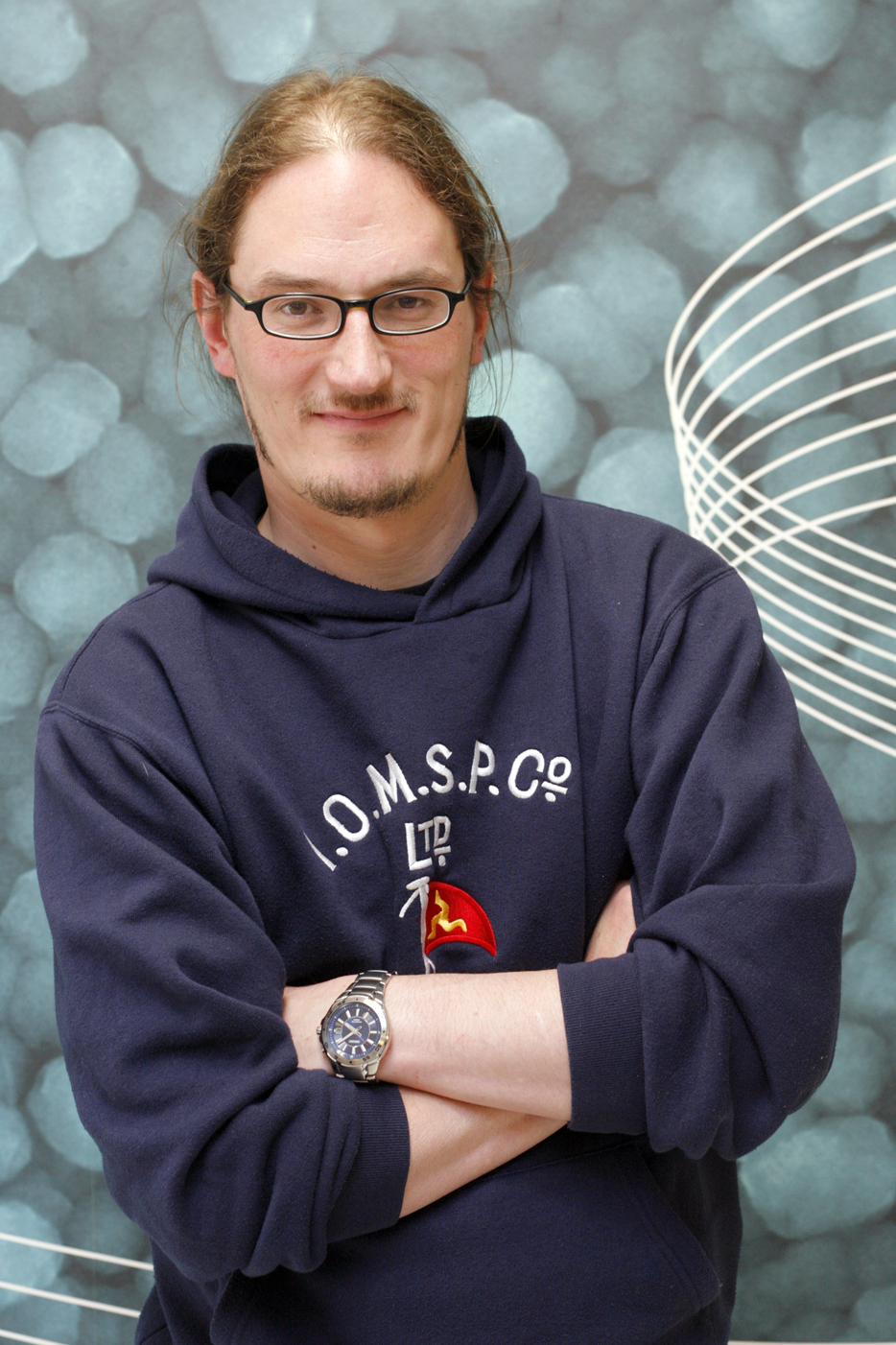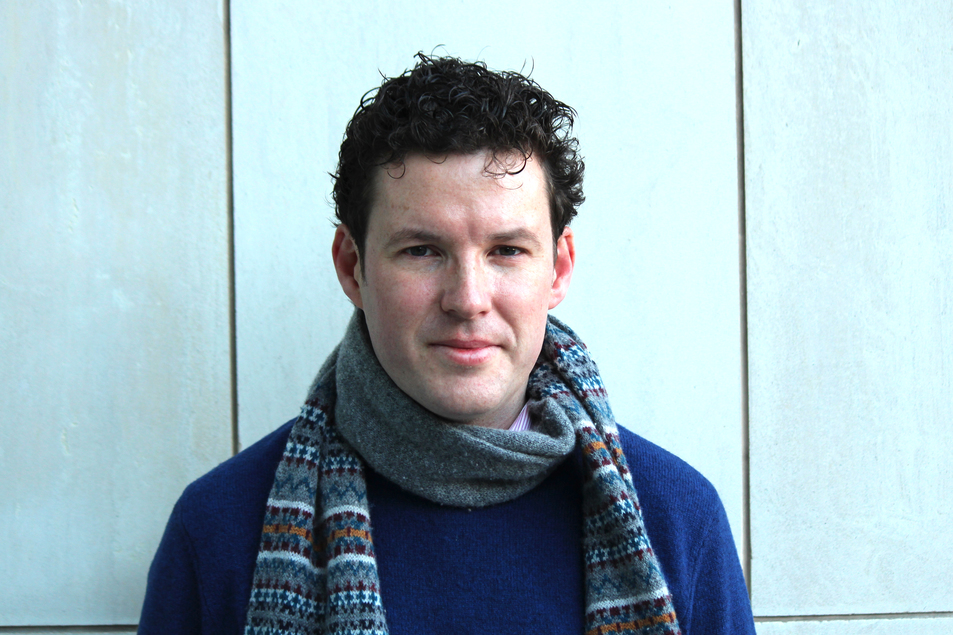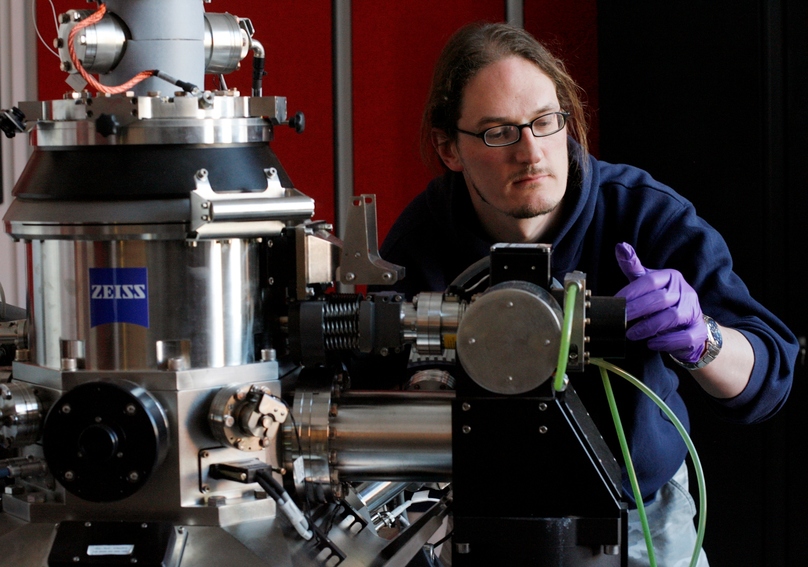Shauna O’Neill | Contributing Writer
Nanoscience is the study of the world around us at a mind-bogglingly small scale. The prefix “nano” conjures images of high-tech music products, computers chips and bloodstream permeating robots from the classic science-fiction series, Star Trek. This small prefix denotes the study of materials at a length-scale that is 100,000 times smaller than the width of a human hair. The foundation of the field of nanoscience was sparked by the intellectual powerhouse of Richard P. Feynman in 1959, when he delivered a talk entitled “
CRANN (the Centre for Research on Adaptive Nanostructures and Nanodevices) is the largest research institute housed in TCD and it is the leading nanoscience research institute in Ireland. Currently ranked sixth in the world in nanoscience, the research institute was founded in 2003 by Principal Investigators from the Schools of Physics and Chemistry at TCD. The foundation of CRANN turned out to be a real game-changer in nanoscience in Ireland. Since its inception, CRANN has solidified its standing as a funding magnet, having attracted almost €200 million in funding from government, industry, the European Union and philanthropy.
Nanotechnology has proven itself to be a key player in Ireland’s economy in previous years. Estimates show that 10 per cent – about €15 billion – of Ireland’s annual exports and 250,000 Irish jobs are now rooted in nanotechnology. 2013 saw the establishment of a new Science Foundation Ireland-funded research centre, AMBER (Advanced Materials and BioEngineering Research) in TCD. Employing researchers from physics, chemistry, bioengineering and medicine, the AMBER centre can serve both materials science research and theh1 needs of industry.
Prof Jonathan Coleman

Prof Jonathan Coleman entered TCD as an undergraduate physics student in 1991, completing his PhD in 1999. In 2011, he was appointed a full professor in Chemical Physics. Coleman joined the CRANN research institute in 2006 to work on a large collaborative research project with IT giant Hewlett-Packard. The project involved five research groups with the aim of developing nanostructured transparent conductors for display applications. According to Coleman, “the project was extremely successful and played a role in demonstrating the capability of CRANN to run large industry academia collaborative projects”.
The 2011 SFI “Researcher of the Year” specialises in the fields of both nano and materials science by studying one-dimensional nanostructures. His research group has developed methods to make nanomaterials by changing the structures of carbon-based materials. Prof Coleman’s research group uses this process in turning graphite, which is found as the “lead” in a common pencil, into graphene, the new “wonder material” which is more solid than steel and is a better conductor than copper. The array of applications where graphene-based materials can be used is diverse and wide-ranging. He spoke about how graphene can be used in applications from solar cells to sensors to photodetectors.
Recently, Coleman and his team made headlines for their discovery of a novel method for infusing the wonder material graphene into shop bought rubber bands. The research, which has been published in ACS Nano, an international nanoscience journal, was run in collaboration with the AMBER (Advanced Materials and BioEngineering Research) centre. Rubber does not usually conduct electricity, but the addition of graphene to the material allows current to flow. The flow of current within the material responds readily to small bodily movements. This opens up the possibility of creating wearable sensors from this graphene infused material, which could be used in biomedical applications to detect small changes in breath and pulse. When asked about what fascinates him most about the world at the Nanoscale, he said: “Nanomaterials are extremely interesting because their properties can be completely different from what one would expect from their macroscale analogues. For example graphene has properties which are considerably different to graphite.”
Prof Mike Lyons
Prof Mike Lyons entered TCD in 1984 when he was appointed to a lectureship in Physical Chemistry. He was elected a fellow in 1992. Lyons currently heads the SFI-funded Electrochemical Energy Conversion and Electrocatalysis Group at TCD, which has gained international recognition for its work examining the splitting of water into hydrogen and oxygen. In collaboration with CRANN he and his team are spearheading research focusing on the creation of a novel method – known as water electrolysis – for splitting water into hydrogen and oxygen using “new types of electrode materials” based on nickel, cobalt and iron oxide. He also spoke about how water electrolysis stretches back to the days of electrochemical pioneer, Michael Faraday. The materials being used in the electrochemical process are currently expensive, with some costing up to around €500 per gram. Some of these materials are also “kinetically ineffective”, requiring a large energy input and producing a relatively low energy output. Speaking about the need to be “responsive to the needs of industry”, the two gases produced in Lyons’s water electrolysis method – hydrogen and oxygen – can be used to produce “green energy” to drive fuel cells in cars, which will have a “beneficial knock-on for ordinary people and society in general”.
His group is also using a broad body of knowledge in developing electrochemical biosensors based on newly designed electrodes for applications in bio diagnostics and for pH sensing. Lyons’s work also aims to create the technology required to produce a secure supply and sustainability in the extraction of metals from their ores for the mining industry. As part of the CRANN-AMBER project, he has been involved in the development of measurements which use electrochemical techniques to analyse 2D nanomaterials for energy storage applications.
When asked about his future projections for nanoscience, Lyons said he believes that the integration of nanoscience as a tool for manipulating matter at very small length scales in biological systems will be a “fine interplay between Physics, Chemistry and Biology” and will lay the foundation for the 21st century as the “century of Biology”. Researchers are now trying to apply their knowledge of nanoscience and quantum mechanical processes (the laws of atomic physics) to work on solutions to long-standing problems that can’t be solved using classical methods. The field of nanobiology is an example of this and Lyons predicts that by taking biological systems at the nanoscale, these complicated problems can be tackled.
Prof Shane Bergin

Prof Shane Bergin graduated with a degree in advanced materials from TCD in 2003. From there, he went on to complete his PhD in 2007 with the School of Physics under the guidance of Prof Jonathan Coleman, whom he describes as a fantastic PhD supervisor, on the exfoliation of single-walled carbon nanotubes. Bergin, who is a recipient of the European Commission’s Marie Sklodowska-Curie actions (MSCA) achievement award for his work in science communication, describes science as “not being a dead body of fact, but rather an evolving thing”. Bergin’s research centres on investigating the energetics of low-dimensional nanomaterials. His group is looking at ways of taking materials and exfoliating them and exploring the surface energetics of these materials.
Bergin, whose work on the collaborative “DART of Physics” project, which sparked “a city-wide conversation on Science”, detailed the change he has seen Nanoscience go through in recent years. He recalls that CRANN did not exist 10–11 years ago and since that time, it has now risen to take sixth place in the world as a pillar of nanoscience. While Bergin was a second-year advanced materials (now known as nanoscience, physics and chemistry of advanced materials) student, the impressive SNIAM (Sami Nasr Institute of Advanced Materials) building opened. Bergin asserts that “CRANN has given critical mass in TCD to look at various topics in Nanoscience”, which he believes is testament to the ability and standard of students and staff at TCD.
The ingredients of the world around us come from a recipe of physical laws, forces and mathematical descriptions. By studying nanoscience, the science of the small, and examining the very nub of what makes materials tick, we are harnessing our growing knowledge of the world around us to revolutionise technology. We are building lighter, yet stronger aeroplanes, biosensors that detect the tiniest changes in the human body and cleaner, greener and less expensive fuels. Just ten years ago, the global market for materials rooted in nanoscience was worth €420 million. In 2015, predictions say it will climb to $2.5 trillion. The nano-revolution is truly in full swing.
Photos by Benedict Shegog for The University Times







